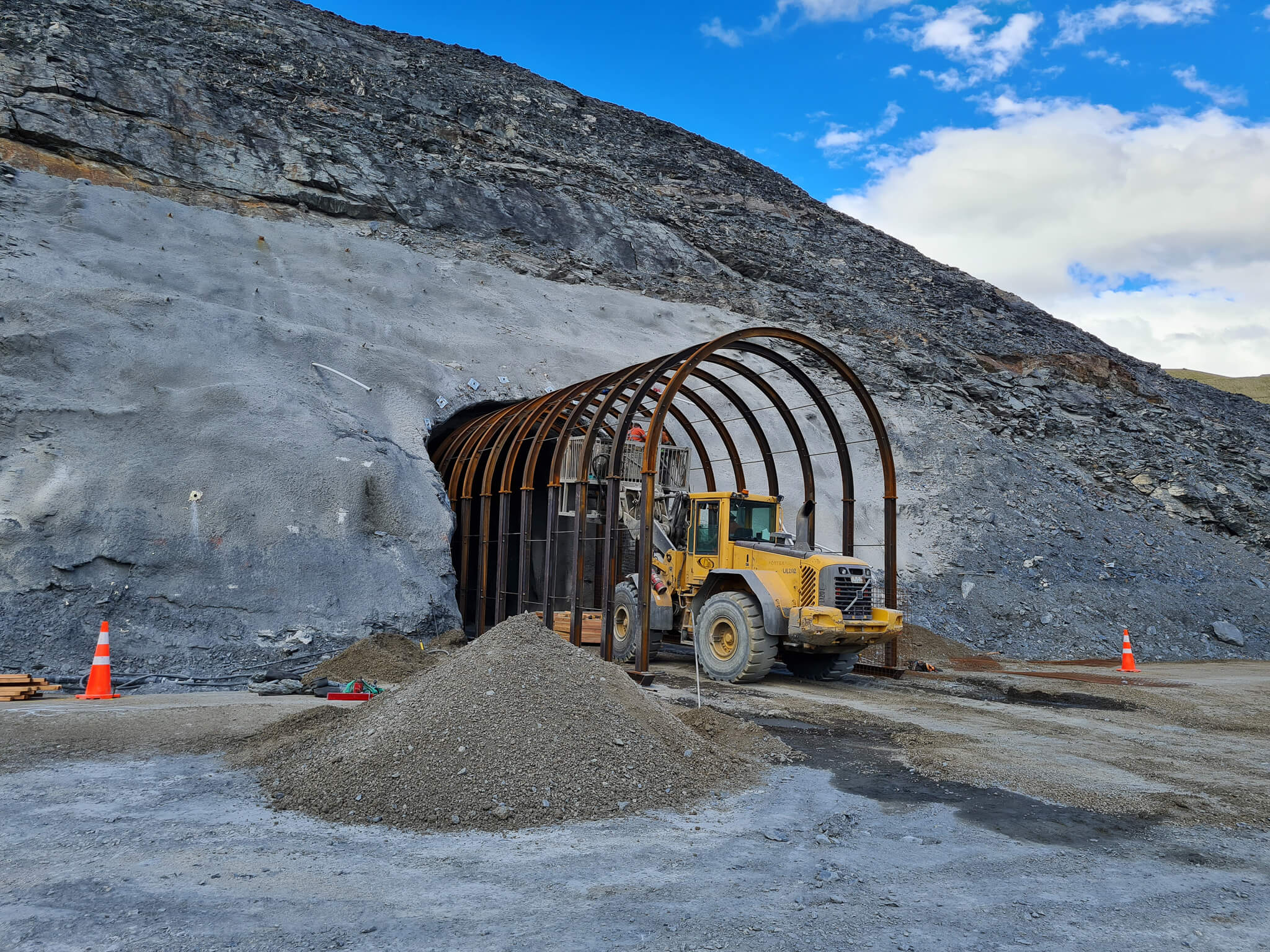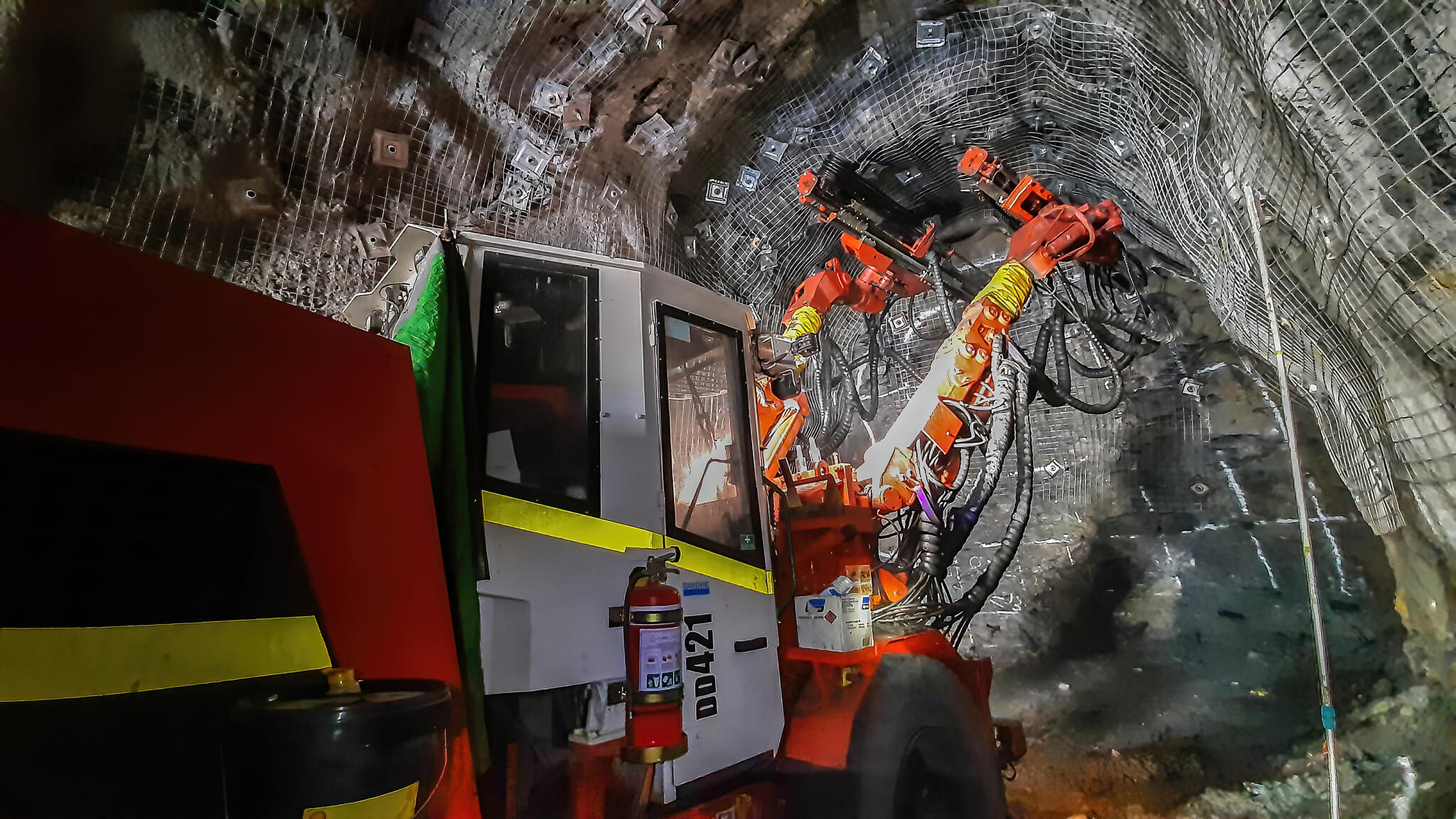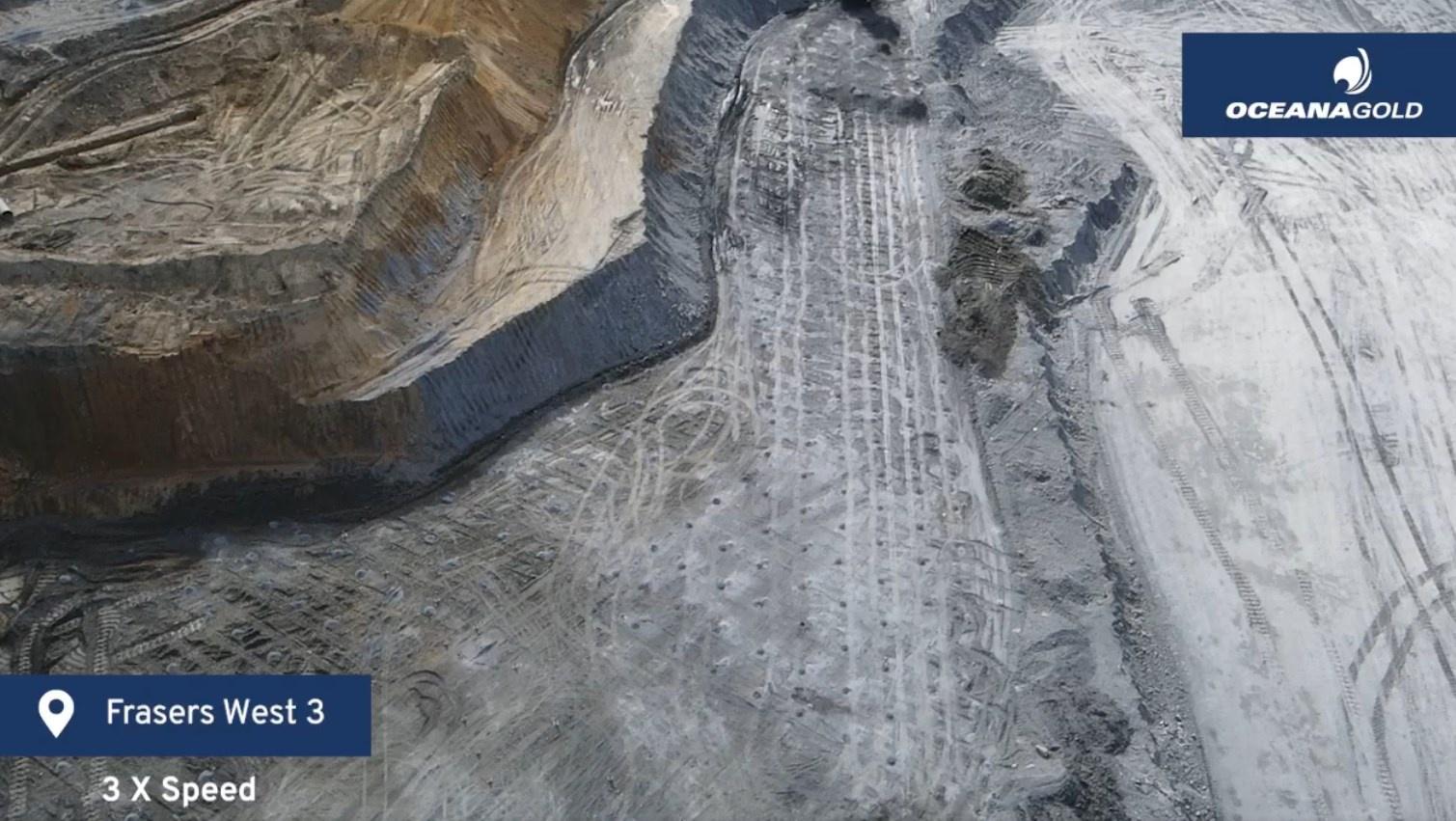
Cycle
An underground mine is established through a cycle of exploration, mining and rehabilitation. It continues to repeat these stages as the process moves through the tunnelling system, often occurring at the same time in different areas.
After receiving the plan for extraction from the Exploration team, and completing a full environmental assessment, mining can begin.
Preparing the Area
To begin preparing the area an entrance called a portal is cut. It serves as the main tunnel or decline used by production mining, while a second tunnel is cut to provide ventilation to bring fresh air flow through. The main decline is around 5 metres in width by 5 metres in height, just big enough to fit our haul trucks and production equipment.
External infrastructure like the entrance canopy, water pumps, power, internet, and radio communications are set up at the same time, connecting the mine to the rest of the operation.

Drilling and Blasting
Jumbos use their long arms to create a drill pattern on the face of the tunnel. The drill holes are filled with explosives and are electronically timed to blast. Blasting the explosives cause the rock to break up and makes it easier to transport.
The portal entrance is drilled and blasted to begin to define the tunnel development. The main decline typically spans 15 metres in depth before access drives branching off it are marked out.
Ground Support
Unlike Open Pit mining, Underground mining tunnels need extensive support to hold the surrounding ground safely. To secure the tunnel walls and ceiling, a concrete material called shotcrete is sprayed before sheets of steel mesh are bolted overtop.
This process continues as the main decline and subsequent development drives are created.

Removing Waste Material
Because underground mining can follow the location of the mineral resource very specifically, minimal waste material is drilled, often only to establish the main decline.
Low-profile loaders known as boggers place the loose waste material onto haul trucks to be taken to the surface and put into waste rock stacks. The boggers are remotely operated to eliminate the exposure of operators to rock falls and other hazards as they often work at the ends of the access drives.
Hauling Gold-bearing Ore
Once the ore body has been reached, production mining begins. Remotely operated boggers sit at the end of access drives and load haul trucks with blasted ore. The trucks transport the gold-bearing ore to the surface. Before the material can head to the ROM (run of mine) pad, any residual steel, explosives or debris from blasting is removed to avoid damaging the mill before it is processed.

Rehabilitating Mined Area
During the mining process sometimes ground support becomes damaged and needs to be replaced or repaired. Geotechnical engineers are constantly monitoring the condition of the tunnel ground support and stability in the underground mine, they assess the requirement for ground support replacement or repair. The process is called tunnel rehabilitation and it is important to ensure safe and stable accessways underground.
Closing an Underground Mine
At the end of the underground mine life, once the ore body has been extracted, the mine must be closed in a safe and environmentally friendly way. Mine closure involves backfilling tunnels, sealing up mine entrance portals, capping vent raises before topsoiling and rehabilitation of mined areas to native planting.




